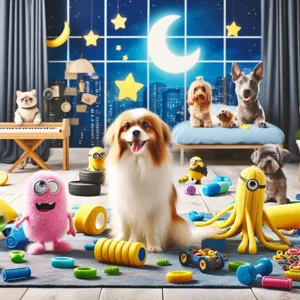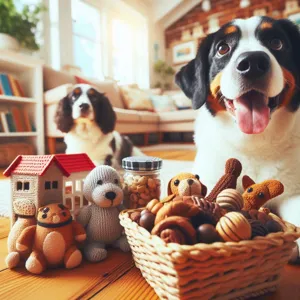As we gaze up at the night sky, the vast expanse of stars and celestial wonders often sparks a sense of curiosity and awe.
Among the countless galaxies that adorn the universe, our very own Milky Way stands out as a magnificent spiral of stars, dust, and dark matter, intricately woven into the cosmic tapestry of existence. This blog post invites you on a journey to explore the Milky Way’s pivotal role in the grand design of the cosmos. From its formation billions of years ago to its interplay with neighboring galaxies, we will delve into the intriguing stories of stellar birth and death, the mysteries of dark matter, and the rich diversity of celestial phenomena that define our galactic home. Join us as we unravel the threads that connect our place in the universe, revealing not just the beauty of the Milky Way, but also its significance in the ever-expanding narrative of the cosmos.
1. Introduction to the Milky Way: Our Cosmic Home

The Milky Way galaxy, a sprawling spiral of stars, gas, and dust, is not just a collection of celestial bodies; it is our cosmic home, a vast and intricate tapestry that has captivated humanity’s imagination for centuries. Stretching over 100,000 light-years in diameter and harboring an estimated 100 to 400 billion stars, the Milky Way serves as both a physical and metaphorical backdrop to our existence. It is a swirling dance of brilliance and mystery, where each star is a beacon of potential and each dark void hints at the unknown.
As we peer into the night sky, we are gazing into the depths of our own galactic neighborhood—a place where the familiar constellations tell stories of ancient myths, while the faint glow of the Milky Way itself invites us to ponder the larger questions of life and our place in the universe. Our galaxy is home to a diverse array of celestial phenomena, including star-forming nebulae, supernova remnants, and the enigmatic black holes that lurk at its core.
Beyond its sheer beauty and complexity, the Milky Way is also a crucial part of the larger cosmic tapestry. It interacts with neighboring galaxies, influences star formation, and plays a vital role in the evolution of the universe itself. Understanding the Milky Way is essential not only for grasping our own history but also for unraveling the mysteries of the cosmos. As we embark on this exploration of our galactic home, we invite you to join us in discovering the wonders that lie within the Milky Way and its significance in the grand scheme of the universe.
2. Understanding the Structure of the Milky Way
Understanding the structure of the Milky Way is akin to unraveling the threads of a vast cosmic tapestry, interwoven with the stories of countless stars, planets, and celestial phenomena. Our galaxy, a barred spiral, measures approximately 100,000 light-years in diameter and is home to an estimated 100 to 400 billion stars. At its core lies a dense, bright region known as the galactic bulge, where stars are packed tightly together, creating a vibrant hub of stellar activity. This central area is surrounded by a rotating disk of stars, gas, and dust, which spirals outward in beautiful arms that give our galaxy its distinctive shape.
Each of these spiral arms is rich with star formation, where new stars are born from vast clouds of gas and dust. The Orion Arm, one of the Milky Way’s major components, is where our solar system resides, nestled comfortably among the billions of stars that populate our galactic neighborhood. Surrounding the disk is a halo of dark matter—a mysterious and largely invisible substance—along with globular clusters, which are tightly packed groups of older stars that orbit the galaxy.
Delving deeper into the Milky Way’s structure reveals intriguing features such as the galactic plane, where most of the galaxy’s mass is concentrated, and the galactic center, which houses a supermassive black hole known as Sagittarius A*. This enigmatic entity not only influences the dynamics of the galaxy but also serves as a powerful reminder of the forces that shape our universe.
As we explore the Milky Way’s structure, we gain a greater appreciation for our place within it. The intricate dance of stars, the swirling arms of gas, and the shadows of dark matter all contribute to a dynamic environment that has evolved over billions of years. Each star we see in the night sky is a testament to the galaxy’s history, and understanding this structure helps us connect with both our cosmic origins and the profound mysteries that lie beyond.
3. The Formation of the Milky Way: A Brief History

The formation of the Milky Way is a captivating story that spans billions of years, unfolding the intricate processes that shaped our galaxy into the majestic spiral we observe today. It all began approximately 13.6 billion years ago, shortly after the Big Bang, when clouds of gas and dust began to coalesce under the influence of gravity. These primordial materials, primarily composed of hydrogen and helium, merged to form the first stars and galaxies.
As these early stars lived and died, they expelled heavier elements into the surrounding space through supernova explosions. This enriching of the interstellar medium provided the building blocks for new stars and planets. Over time, these nascent structures began to cluster together, forming small galaxies that would eventually collide and merge. One of the most significant of these encounters occurred around 10 billion years ago when our Milky Way began to merge with smaller galaxies, leading to the formation of a more massive galactic structure.
The Milky Way continued to evolve through a series of mergers and accretions, incorporating smaller dwarf galaxies and gas clouds along its journey. This process not only contributed to the growth of its stellar population but also shaped its distinct spiral arms and central bulge. The galaxy’s rotation and the gravitational influences of dark matter played a crucial role in determining its spiral shape, giving rise to the stunning pinwheel formation that defines the Milky Way today.
As we delve deeper into the cosmic tapestry, we find that the formation of the Milky Way is not just a tale of stellar birth and death; it is also a story of connection and interaction with the vast universe around it. Our galaxy is part of a larger structure known as the Local Group, which includes other galaxies like Andromeda and the Triangulum Galaxy. These relationships highlight the dynamic nature of the cosmos and the continuous dance of creation and destruction that defines our universe.
In understanding the formation of the Milky Way, we not only gain insight into our own cosmic neighborhood but also appreciate the profound connections that exist between all galaxies. Our place within this grand narrative underscores the beauty and complexity of the universe, inviting us to explore further and uncover the mysteries that lie beyond our own star-studded skies.
4. The Milky Way’s Position in the Local Group
The Milky Way’s Position in the Local Group is a fascinating aspect of our cosmic neighborhood that highlights the interconnectedness of galaxies within the universe. The Local Group is a collection of over 54 galaxies bound together by gravity, encompassing well-known members such as the Andromeda Galaxy, the Triangulum Galaxy, and numerous smaller dwarf galaxies. Our Milky Way, a barred spiral galaxy, is the second largest in this group, trailing only behind the Andromeda Galaxy in size and mass.
Situated roughly 2.5 million light-years away from Andromeda, the Milky Way is part of a dynamic gravitational dance that influences its neighboring galaxies. This relationship is not merely one of proximity; it is a complex interaction characterized by gravitational pulls, satellite galaxies, and occasional galactic collisions. The Milky Way, with its sprawling arms and dense core, is home to billions of stars, planets, and stellar remnants, making it a significant player in the Local Group’s cosmic drama.
Interestingly, the Milky Way and Andromeda are on a collision course, set to merge in about 4.5 billion years. This impending cosmic event will reshape both galaxies, creating a new galaxy often referred to as “Milkomeda” or “Milkdromeda.” Understanding the Milky Way’s position within the Local Group not only informs us about our galaxy’s structure and evolution but also sheds light on the broader dynamics of galaxies interacting in the vast universe. As we explore this cosmic tapestry, we gain insights into the processes that govern galactic formation, evolution, and the ultimate fate of our place in the cosmos.
5. Comparing the Milky Way to Other Galaxies

When we gaze up at the night sky, the shimmering band of the Milky Way captures our imagination and evokes a sense of wonder about our place in the universe. But how does our galaxy compare to its celestial neighbors? Understanding the Milky Way in the context of other galaxies provides valuable insights into its structure, formation, and evolution.
The Milky Way is classified as a barred spiral galaxy, characterized by its distinct spiral arms radiating from a central bar-shaped structure. This classification places it in a fascinating category alongside other prominent galaxies, such as the Andromeda Galaxy, which is another spiral galaxy, but without the prominent bar feature. Observations reveal that Andromeda is on a collision course with the Milky Way, which will eventually result in a spectacular galactic merger, reshaping both galaxies in the process.
In contrast, the elliptical galaxies, like M87, present a starkly different structure. Lacking the defined spiral arms and disk-like shape of the Milky Way, elliptical galaxies are composed of older stars, with less gas and dust available for new star formation. This gives them a more uniform appearance, often resembling a three-dimensional football. Studying these differences helps astronomers decipher the life cycles of galaxies and their respective environments.
Then there are irregular galaxies, such as the Large and Small Magellanic Clouds, which orbit the Milky Way. These galaxies lack a coherent structure, often appearing chaotic and fragmented. Their irregular shapes are a testament to gravitational interactions, collisions, and mergers with other galaxies, including the Milky Way itself. Observing these irregularities enhances our understanding of galaxy formation and the influence of gravitational forces.
As we compare the Milky Way to its galactic cousins, we uncover not only the unique characteristics that define each galaxy but also the interconnectedness of the cosmic tapestry. The study of these galaxies sheds light on our own galaxy’s past and future, illustrating that while the Milky Way is our home, it is also part of a grander cosmic narrative, woven into the fabric of the universe itself. Exploring these relationships enriches our understanding of the dynamics at play in the cosmos and deepens our appreciation for the Milky Way’s role in this vast and intricate system.
6. The Role of Dark Matter in the Milky Way
The Role of Dark Matter in the Milky Way
As we explore the vast expanse of the Milky Way, one of the most intriguing and elusive components of our galaxy emerges from the shadows: dark matter. Though it cannot be seen or directly measured, dark matter accounts for approximately 27% of the universe’s mass-energy content, weaving an intricate web that influences the structure and behavior of galaxies, including our own.
Within the Milky Way, dark matter manifests in a halo that envelops the galaxy, exerting a gravitational pull on visible matter such as stars, gas, and dust. This invisible framework is essential for understanding the dynamics of our galaxy. Observations reveal that the outer regions of the Milky Way rotate at unexpectedly high speeds, and it is dark matter that provides the necessary gravitational force to keep these stars in orbit. Without it, the stars at the edges would fly away, unable to be held in place by the gravitational effects of visible matter alone.
The distribution of dark matter also contributes to the formation of galactic structures. It acts as a scaffold, guiding the accumulation of gas and dust, which in turn leads to star formation. As galaxies collide and merge, dark matter plays a pivotal role in reshaping their contours, dictating the eventual fate of these cosmic giants.
Researchers continuously strive to understand the properties of dark matter, with experiments on Earth and in space seeking to unveil its nature. Some theories propose it could be comprised of Weakly Interacting Massive Particles (WIMPs) or axions, but as of now, it remains one of the universe’s greatest mysteries.
In summary, dark matter is not merely a backdrop to the vibrant tapestry of the Milky Way; it is a crucial player in the cosmic drama, shaping the galaxy’s form, guiding stellar orbits, and influencing the intricate dance of celestial phenomena. As we delve deeper into the mysteries of our galaxy, the enigma of dark matter continues to invite curiosity, reminding us that the universe is a complex interplay of known and unknown forces intertwining in a cosmic ballet.
7. Star Formation and Evolution within the Milky Way

The Milky Way is not just a collection of stars; it is a vibrant nursery and a graveyard of celestial bodies, each playing a crucial role in the ongoing saga of star formation and evolution. Within its spiral arms, regions of dense gas and dust serve as the cradle for new stars, where gravity pulls together clouds of hydrogen and helium, igniting nuclear fusion and giving birth to luminous giants. These stellar nurseries, such as the Orion Nebula, are breathtakingly beautiful, often illuminated in hues of pink and blue, showcasing the processes of star birth in vivid detail.
As stars emerge from these cosmic wombs, they embark on unique life journeys influenced by their mass. Massive stars, burning brightly and rapidly, may only live for a few million years before ending their lives in spectacular supernovae, scattering their enriched materials back into the interstellar medium. This process not only enriches the gas and dust that will form new stars but also seeds the galaxy with heavy elements essential for life, such as carbon, oxygen, and iron.
The Milky Way’s stellar population is a tapestry woven from various stellar generations. As older stars exhaust their fuel, they enter stages of evolution that can lead to fascinating phenomena. Some swell into red giants, shedding their outer layers and forming planetary nebulae, while others may collapse into white dwarfs, neutron stars, or black holes, each representing a different endpoint in a star’s life cycle.
This constant cycle of birth, life, and death is what makes the Milky Way a dynamic and ever-evolving entity within the cosmos. It reminds us that we are part of a grand narrative, with our own solar system forming from the remnants of ancient stars that once illuminated the galaxy. The Milky Way, with its intricate processes of star formation and evolution, is not merely a backdrop in the universe; it is an active participant in the cosmic dance of creation, destruction, and rebirth.
8. The Milky Way’s Interactions with Neighboring Galaxies
The Milky Way is not an isolated entity; rather, it is an active participant in a dynamic cosmic dance with its neighboring galaxies. This intricate web of interactions plays a crucial role in shaping the structure and evolution of our galaxy, as well as those nearby. The gravitational forces at play between the Milky Way and its companions, such as the Andromeda Galaxy and the Triangulum Galaxy, create a fascinating narrative of cosmic relationships.
One of the most striking examples of these interactions is the impending collision between the Milky Way and Andromeda, set to occur in approximately 4.5 billion years. This monumental event promises to reshape both galaxies, merging them into a new celestial entity. As they spiral closer, their gravitational forces will trigger a flurry of star formation, creating brilliant bursts of new stars amid the chaos. This impending merger serves as a reminder of the ever-evolving nature of our universe, where galaxies are not static but rather dynamic systems in constant flux.
Moreover, the Milky Way’s gravitational influence extends beyond the immediate vicinity. It is part of a larger structure known as the Local Group, which includes over 50 galaxies. The gravitational interactions within this group lead to fascinating phenomena such as tidal tails and satellite galaxies. The Small and Large Magellanic Clouds, for instance, are irregular dwarf galaxies that orbit the Milky Way, their shapes distorted by our galaxy’s gravitational pull. These interactions not only impact the physical characteristics of these galaxies but also provide valuable insights into their histories and the processes of galactic evolution.
The Milky Way’s interactions with neighboring galaxies are a testament to the interconnectedness of the cosmos. Each encounter, each gravitational tug, contributes to the grand narrative of the universe, illustrating that we are part of a much larger cosmic tapestry. Understanding these relationships deepens our appreciation of our place in the universe, highlighting that even in the vastness of space, we are never truly alone.
9. How the Milky Way Influences Cosmic Events
The Milky Way, our home galaxy, is not just a collection of stars, dust, and dark matter; it plays a pivotal role in influencing cosmic events on a grand scale. This immense spiral galaxy, with its sweeping arms and vibrant clusters, interacts dynamically with its surroundings, shaping both the local and distant universe in a multitude of ways.
One of the most fascinating aspects of the Milky Way’s influence lies in its gravitational pull. As a massive entity, it exerts a profound force on nearby galaxies and celestial objects. This gravitational relationship can lead to spectacular phenomena such as galactic collisions and mergers. For instance, the impending collision with the Andromeda Galaxy, estimated to occur in about 4.5 billion years, will reshape not only both galaxies but also trigger new star formation as gas clouds collide and coalesce.
Additionally, the Milky Way is a crucial player in the lifecycle of stars. Within its spiral arms, dense regions of gas and dust serve as nurseries for new stars. Here, the intricate dance of gravity, pressure, and thermonuclear reactions gives birth to stellar bodies that will eventually evolve and die in spectacular supernova explosions. These explosive events not only enrich the interstellar medium with heavier elements but also influence the formation of new stars and planetary systems, perpetuating a cycle of cosmic rebirth.
Moreover, the Milky Way’s supermassive black hole, Sagittarius A*, exerts a significant influence on its surrounding region. The energetic jets and radiation emitted by matter falling into this black hole can affect the dynamics of star formation in the galactic core and beyond, creating a ripple effect throughout the galaxy. This black hole acts as both a gravitational anchor and a cosmic engine, shaping the environment in which stars and planets develop.
The Milky Way also interacts with the cosmic microwave background radiation, the afterglow of the Big Bang. As our galaxy moves through this ancient radiation, it creates a detectable dipole anisotropy that provides insights into our motion through the universe. Understanding these interactions allows astronomers to piece together the larger cosmic puzzle, revealing how our galaxy fits into the vast tapestry of the cosmos.
In essence, the Milky Way is a vital thread in the cosmic narrative. Its influence extends far beyond its own boundaries, intertwining with the evolution of galaxies, stars, and cosmic structures throughout the universe. By studying our galaxy’s role in these grand cosmic events, we gain not only a deeper understanding of our place in the universe but also an appreciation for the intricate connections that bind all celestial bodies together in this magnificent cosmic tapestry.
10. The Milky Way in the Context of the Universe’s Evolution
The Milky Way, our home galaxy, is not just a stunning spiral of stars; it is a crucial player in the grand narrative of the universe’s evolution. To understand its role, we must first recognize that galaxies are the building blocks of the cosmos, each one a unique collection of stars, gas, dust, and dark matter, woven together by the gravitational forces that govern the universe.
As we gaze upon the night sky, the Milky Way serves as a reminder of the dynamic processes that have shaped the universe since the Big Bang—a cataclysmic event that birthed time and space approximately 13.8 billion years ago. Over billions of years, clumps of matter coalesced and evolved, forming stars and galaxies, with the Milky Way emerging as one of the most complex and vibrant structures.
The Milky Way itself is a product of countless cosmic events, from the merging of smaller galaxies to the birth and death of stars. Each of these processes has contributed to the galaxy’s structure and composition, influencing everything from its spiral arms to the distribution of stellar populations. As a barred spiral galaxy, the Milky Way is characterized by its distinctive central bar and delicate spiral arms, which are home to young, hot stars surrounded by clouds of gas and dust.
Moreover, the Milky Way’s interaction with neighboring galaxies—most notably the Andromeda Galaxy, which is on a collision course with us—highlights the dynamic nature of the universe. Such interactions play a pivotal role in galactic evolution, prompting bursts of star formation and leading to the recycling of matter back into the cosmic ecosystem.
As we explore our place within the Milky Way, we uncover the profound interconnectedness of all cosmic entities. The elements forged in the hearts of ancient stars have been recycled into new generations of stars, planets, and eventually, life itself. By studying the Milky Way’s structure, composition, and history, we not only gain insights into our own origins but also piece together the vast tapestry of the universe, revealing the intricate web of relationships that bind us to the cosmos at large.
In this way, the Milky Way is not merely a backdrop for our existence; it is a vital participant in the unfolding story of the universe, reminding us of our shared heritage and the ever-evolving nature of the cosmos.
11. The Importance of the Milky Way in Astrobiology
The Milky Way galaxy is not just a magnificent swirl of stars and cosmic dust; it plays a pivotal role in the field of astrobiology, the study of the potential for life beyond Earth. Understanding our galaxy’s structure, composition, and dynamics provides crucial insights into where and how life might emerge in the universe.
At the heart of this exploration is the realization that the Milky Way is home to billions of stars, many of which have their own planetary systems. These exoplanets, some within the habitable zone—where conditions might be right for liquid water—are prime candidates for hosting life. The sheer number of potentially habitable worlds within our galaxy raises exciting possibilities about the diversity of life forms that may exist beyond our own planet.
Moreover, the Milky Way’s spiral arms, rich in gas and dust, serve as fertile nurseries for star formation. The presence of heavy elements, created in the hearts of stars and spread throughout the galaxy via supernova explosions, contributes to the formation of complex molecules essential for life as we know it. Understanding the distribution of these elements helps researchers identify regions in the galaxy that are more likely to support life.
The study of cosmic radiation and its effects on planetary atmospheres is another vital aspect of astrobiology within the Milky Way. Our galaxy’s various regions expose planets to different levels of radiation, influencing their atmospheres’ ability to shield potential life forms. This knowledge aids in assessing which exoplanets are most likely to develop and sustain life.
Lastly, the dynamic interplay of cosmic events, such as supernovae, gamma-ray bursts, and the movement of stellar bodies, can have profound effects on planetary systems. These events can either foster conditions suitable for life or pose catastrophic threats. By studying these phenomena within the Milky Way, astrobiologists gain insights into the stability and longevity of planetary environments.
In essence, the Milky Way serves as both a backdrop and a crucial player in the ongoing quest to understand life’s existence beyond Earth. By delving into its secrets, we are not only exploring our cosmic neighborhood but also expanding our understanding of life’s potential across the universe, weaving a richer narrative in the cosmic tapestry.
12. Cultural Perspectives: The Milky Way in Mythology and Art
The Milky Way has long served as a source of inspiration and intrigue for cultures around the globe, weaving its presence into the very fabric of mythology and art. Throughout history, this luminous band of stars has been interpreted in diverse ways, often reflecting the values, beliefs, and aspirations of various civilizations.
In many Indigenous cultures, the Milky Way is regarded as a celestial river, a pathway that connects the earthly realm to the heavens. For the Aboriginal Australians, it is known as the “River of Stars,” and they tell stories of ancestral beings journeying across the night sky. These narratives not only explain the origins of the universe but also serve to reinforce a deep connection to the land and the cosmos.
Similarly, ancient Greek mythology presents the Milky Way as a symbol of divine influence and cosmic order. The myth of Hera and Heracles describes how the Milky Way was formed from the spilled milk of the goddess, creating a bridge between the mortal and divine realms. This allegory highlights humanity’s fascination with the stars as a backdrop for tales of heroism, love, and creation.
In art, the Milky Way has inspired countless masterpieces, from Van Gogh’s swirling skies in “Starry Night” to the ethereal landscapes of contemporary cosmic artists. These works capture the awe and wonder that the night sky evokes, inviting viewers to reflect on their own place in the universe. The Milky Way’s ethereal beauty transcends mere observation; it prompts introspection and a sense of belonging within the greater cosmic tapestry.
As we explore our place in the universe, acknowledging the cultural perspectives surrounding the Milky Way enriches our understanding of its significance. It reminds us that the stars have always been more than just distant points of light; they are a canvas upon which humanity has painted its dreams, struggles, and aspirations across time and space. In recognizing these myriad interpretations, we further appreciate the profound impact that the Milky Way continues to have on our collective imagination.
13. Observational Challenges: Studying Our Galaxy
**Observational Challenges: Studying Our Galaxy**
Studying the Milky Way presents a unique set of challenges that can baffle even the most seasoned astronomers. As our home galaxy, it is both familiar and elusive, cloaked in layers of cosmic dust and gas that obscure our view of its true nature. One of the primary obstacles in observing our galaxy is our position within it. Imagine trying to map a sprawling city while standing in the middle of it—this is the predicament faced by astronomers attempting to understand the structure and dynamics of the Milky Way.
The galactic plane, where the majority of stars and stellar phenomena reside, is densely packed with interstellar dust that absorbs and scatters light. This veil makes it incredibly difficult to see through optical telescopes, forcing scientists to turn to alternative wavelengths such as infrared and radio waves. Infrared observations can penetrate the dust, revealing hidden stars, stellar nurseries, and even the central supermassive black hole, Sagittarius A*. However, these observations require sophisticated technology and often collaborative efforts from multiple observatories around the world.
Moreover, the sheer size and complexity of the Milky Way present additional hurdles. With an estimated 100 billion to 400 billion stars, mapping their positions, movements, and interactions is a monumental task. Astronomers rely on parallax measurements and advanced techniques like Gaia, a space observatory launched by the European Space Agency, which is cataloging the positions and motions of stars with unprecedented accuracy. Even with such advancements, piecing together the intricate details of our galaxy’s spiral arms, star clusters, and the influence of dark matter remains a daunting challenge.
In addition, the Milky Way is not a static entity; it is constantly evolving. Stars are born, live out their lifespans, and die, often in spectacular supernova explosions that rip through the galaxy. Understanding these dynamic processes requires not just observational data, but also sophisticated computer simulations that can mimic the complex gravitational interactions at play.
As we continue to refine our observational tools and techniques, the mysteries of the Milky Way begin to unfold. Each breakthrough brings us one step closer to understanding not just our galaxy’s structure and history, but also its place in the broader cosmic tapestry. The challenges may be great, but the quest to explore our galactic home is a journey filled with wonder and discovery, reminding us of the vastness of the universe and our small yet significant role within it.
14. Future of Milky Way Research: Key Questions and Discoveries
As we look to the future of Milky Way research, several key questions and potential discoveries loom on the horizon, promising to deepen our understanding of our galactic home and its place in the larger cosmos. Scientists and astronomers are increasingly turning their gaze towards the secrets hidden within our spiral arms, and the mysteries that lie beyond the observable limits of our galaxy.
One of the foremost questions concerns the nature of dark matter. Comprising a substantial portion of the universe, dark matter’s elusive qualities continue to baffle researchers. How does it influence the structure and dynamics of the Milky Way? Future studies may employ advanced observational techniques and simulations to unveil the gravitational effects of dark matter on our galaxy’s formation and evolution.
Another captivating area of inquiry involves the Milky Way’s interactions with neighboring galaxies. The Andromeda Galaxy, on a collision course with our own, presents a unique opportunity to study galactic mergers and their consequences. How will this impending interaction reshape our galaxy? Will it trigger new star formation, or will it disrupt existing stellar systems? As we anticipate this cosmic encounter, astronomers are developing models and simulations to predict the outcomes of such monumental events.
Furthermore, the search for exoplanets within the Milky Way is gaining momentum. The discovery of potentially habitable worlds raises profound questions about the possibility of life beyond Earth. What role does our galaxy play in the broader narrative of life in the universe? With the launch of next-generation telescopes and observatories, researchers are poised to conduct extensive surveys, potentially uncovering new planets and invaluable insights into their atmospheres and conditions.
Finally, as we delve deeper into the Milky Way’s core, the enigmatic supermassive black hole, Sagittarius A*, offers tantalizing clues about the nature of gravity and the behavior of matter under extreme conditions. What can the study of this black hole tell us about the fundamental laws of physics? With ongoing research and improved observational capabilities, we may uncover not only the secrets of Sagittarius A* but also how such massive entities influence the surrounding stellar environment.
In summary, the future of Milky Way research is brimming with promise and intrigue. From unraveling the mysteries of dark matter and cosmic collisions to exploring the potential for life on distant exoplanets, each discovery brings us one step closer to understanding our galaxy’s role in the intricate tapestry of the universe. As we stand on the brink of these exciting explorations, the Milky Way continues to captivate and inspire, reminding us of our place in the grand cosmic design.
15. Conclusion: Our Place in the Cosmic Tapestry
In concluding our journey through the vastness of the Milky Way and its intricate role within the cosmic tapestry, we come to appreciate the profound significance of our existence in this grand universe. The Milky Way is not merely a swirling mass of stars and dust; it is our galactic home, a cradle of life and a witness to the unfolding drama of cosmic evolution.
As we gaze up at the night sky, each twinkling star tells a story—a story of formation, destruction, and rebirth, interwoven with the threads of time and space. Our solar system, nestled within one of the galaxy’s spiral arms, is a testament to the beauty and complexity of cosmic processes. Here, on our small blue planet, we have the unique ability to ponder our origins, question our purpose, and explore the mysteries of the universe.
Understanding our place in the Milky Way enriches our perspective on life and the cosmos. It reminds us that we are part of something much larger than ourselves, a dynamic system that has existed for billions of years and will continue to evolve long after we are gone. Each discovery, whether it be through advanced telescopes or theoretical physics, brings us closer to grasping the intricate connections that bind us to the universe.
As we continue to explore the cosmos, let us carry forward a sense of wonder and curiosity. The Milky Way, with its millions of stars and countless worlds, invites us to dream, to question, and to seek knowledge. In this exploration of our galactic home, we not only learn about the universe but also about ourselves, our place within it, and the shared destiny we hold with all that exists. The cosmic tapestry is vast and intricate, and our thread is but one among many—yet it shines brightly in the grand design.
In conclusion, our journey through the Milky Way has unveiled not just the beauty of our galactic home but also its vital role in the grand cosmic tapestry. As we explore the intricate threads that connect stars, planets, and the very fabric of the universe, we are reminded of our place within this vast expanse. From the formation of stellar nurseries to the dynamic interactions of celestial bodies, the Milky Way serves as a profound reminder of the interconnectedness of all things in the cosmos. As you gaze up at the night sky, may you feel a sense of wonder and belonging, knowing that you are part of a magnificent story that stretches across time and space. Thank you for joining us on this cosmic exploration, and we encourage you to continue seeking the mysteries and marvels that the universe has to offer.








